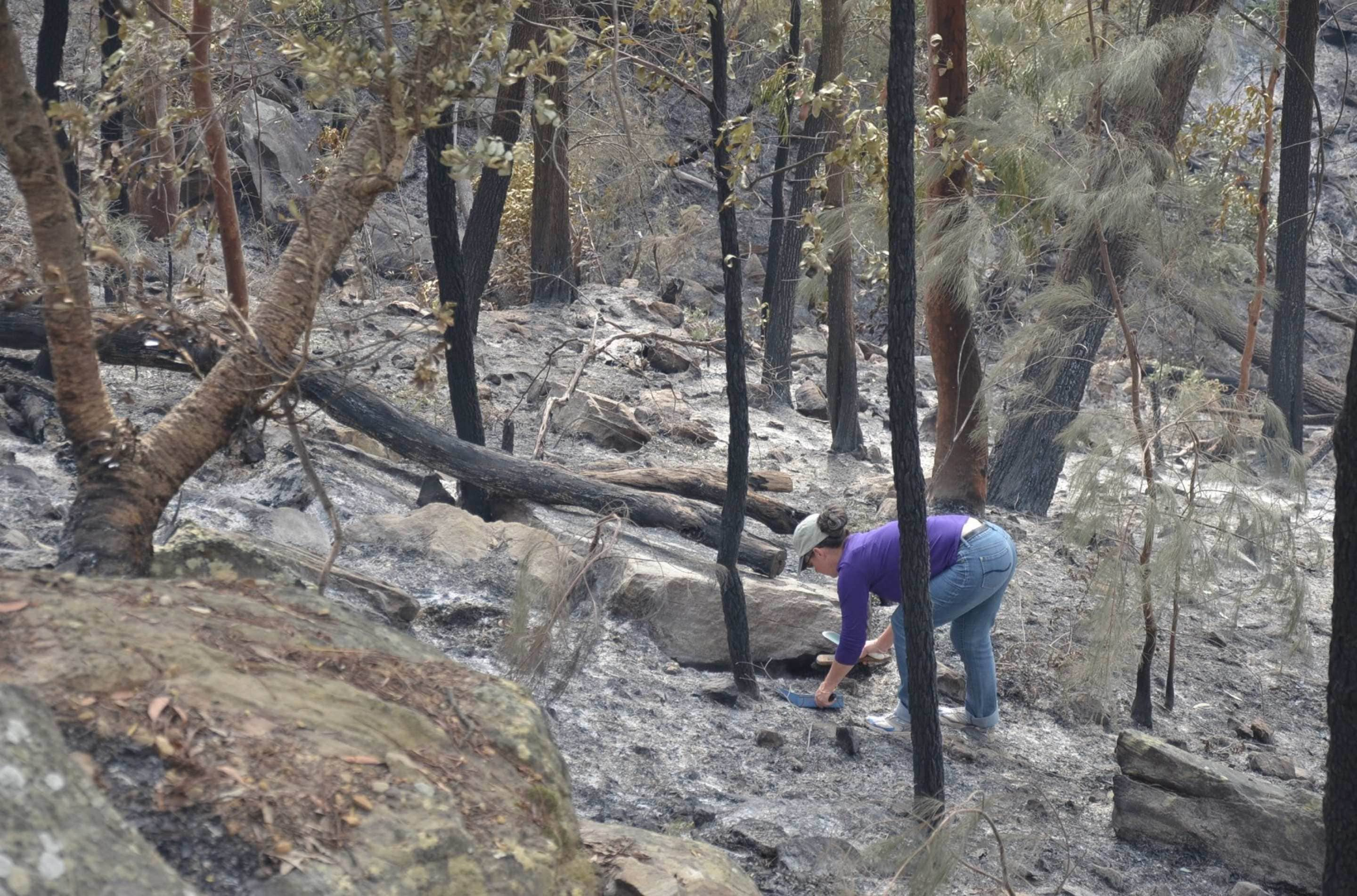
Black Summer bushfire season cost farmers up to $5 billion

Associate Professor Tina Bell collecting ash from bushfire affected forest in Berowra Valley, north of Sydney.
A new report by the World Wide Fund for Nature-Australia and researchers at the University of Sydney estimates the 2019-20 bushfires cost Australian agriculture between $4 billion and $5 billion.
This massive hit to farmers and the food sector represents between 6 and 8 percent of agricultural gross domestic product (GDP).
Costs include damage to farm buildings and equipment, and a reduction in farmland values (estimated at $2 billion to $3 billion); loss of crops and more than 100,000 livestock deaths (about $2 billion); and health impacts from smoke inhalation by farmers and other food workers (at least $279 million).
Co-author Associate Professor Tina Bell said: “Australia relies on agriculture for both domestic food supply and international trade. We need to protect this industry by doing everything in our power to reduce the devastating impact bushfires can have on production, landscapes and livelihoods.”
Associate Professor Bell is a fire ecologist in the School of Life and Environmental Sciences.
The Fire On The Farm report also updates WWF-Australia’s initial estimates of the economic cost of the 2019-20 bushfires’ greenhouse gas emissions. Based on the government’s most recent emissions report, that cost has dramatically increased to between $3 billion and $7 billion in damages, depending on the rate of forest regeneration.

Associate Professor Tina Bell.
Forests regrow but do not store the same amount of carbon because recovery is never 100 percent. Offsetting this gap in lost carbon stocks would cost about $1.5 billion.
The Fire On The Farm report praises the strength and resilience of farmers and the food system for continuing to supply quality products despite the 2017-2019 drought, the 2019-2020 bushfires and the COVID-19 pandemic.
However, it warns increasing challenges are predicted.
Among the report’s recommendations is a call for governments and the food industry to assist Australia’s food producers to become more resilient to bushfires and other natural disasters, which are becoming increasingly frequent, widespread and severe due to climate change.
Potential solutions include nature-based responses, such as reviving Indigenous cultural burning to reduce fuel loads, fire-resistant plantings and improved soil and vegetation management to increase soil moisture and carbon stores.
Building more fire resilient farm buildings and infrastructure is another measure to help prepare for the future.
Governments should measure and monitor bushfire risks to, and impacts on, the food system and strengthen access to comprehensive insurance arrangements that cover the full costs of bushfires, the report says.
Dr Joshua Bishop, Conservation Economist at WWF-Australia, said: “A more extreme climate is now a fact of life and we need to plan accordingly. That means using science to help farmers withstand destructive weather events while moving as quickly as we can to reduce emissions and remove carbon from the atmosphere.”
Dr Michelle Ward, Conservation Scientist at WWF-Australia, said: “Incentives to help promote sustainable, regenerative and climate-resilient agriculture would likely provide benefits that far exceed the costs, especially considering there would be significant intangible losses to the food sector not covered in our report.”
Mr Chuan Huang, Master of Sustainability, University of Sydney, said: “The challenge for Australia now is to help food producers manage the land to reduce fire risk and severity in a way that maintains productivity.”
Declaration
The Fire On The Farm report was funded by WWF-Australia
About Regenerate Australia
Regenerate Australia is a wildlife recovery and landscape regeneration program launched by WWF-Australia in October 2020. The multi-year program aims to rehabilitate, repopulate and restore wildlife and habitats affected by the 2019-2020 bushfires and help to future-proof Australia against the impacts of changing climate.
Find out more and help Regenerate Australia at www.wwf.org.au/regenerate-australia.
